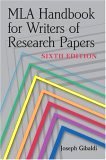

 Reference Site Map |
|
Tracy Jones
Mr. K. Smith
ENG-4GN-01
19 January 2009
The World Book Encyclopedia defines Taboo as "an action, object, person, or place forbidden
by law or culture."1
An encyclopedia of the occult points out that taboo is found among many other cultures
including the
ancient Egyptians, Jews and others.2
Mary Douglas has analyzed the many facets and interpretations of taboos across
various cultures.
She points out that the word "taboo" originates from the Polynesian
languages meaning a religious restriction.3 She finds that "taboos flow from social
boundaries and support the
social structure."4
Robert Deliège points out that as early as 1777, Captain James Cook reported
that some chiefs in Tonga were taboo and were not allowed to behave like common
people, and that the first European observers were not quite sure whether "taboo" meant
"sacred" or "defiled."5
In traditional British East Africa, between the time of puberty and marriage, a young
Akamba girl must maintain an avoidance relationship with her own father.6
Looking at taboo in a modern society, Marvin Harris gives an interesting example of the
application of cultural materialism to the Hindu taboo against eating beef.7
Begin your Endnotes page by centering the title Endnotes or Notes 1" (2.5 cm) or about 6 lines from the top of the page. Double-space your entries, indent each Endnote citation 1/2" (1.25 cm) or 5 spaces from the left margin, do not indent subsequent lines, add a superscripted Endnote citation number at the beginning of each citation, leave one space after the superscripted number, and list entries in the same numerical order as they appear in the text of your paper.
For samples of numerous other Endnote citations, please see pages 270-284 in:

1Alan Dundes, "Taboo," World Book Encyclopedia. 2000 ed.
2 "Taboo," Occultopedia: Encyclopedia of Occult Sciences and Knowledge,
Site created and designed by Marcus V. Gay, 18 Jan. 2005 <http://www.occultopedia.com/
t/taboo.htm>.
3 Mary Douglas, "Taboo," Man, Myth & Magic,
ed. Richard Cavendish,
new ed., 21 vols. (New York: Cavendish, 1994) 2546.
4 Douglas 2549.
5 Robert Deliège, "Untouchability - Taboos - Bibliography," Science Encyclopedia, 2009,
16 Jan. 2009 <http://science.jrank.org/pages/8139/Untouchability-Taboos.html>.
6 Sigmund Freud, Totem and Taboo (New York: Random, 1918) 17.
7 Marvin Harris, "The Cultural Ecology of India’s Sacred Cattle," Current
Anthropology 1992, 7:51-66, qtd. in McGrath, "Ecological Anthropology," Anthropological
Theories: A Guide Prepared by Students for Students 19 Oct. 2001, U. of Alabama,
16 Jan. 2009 <http://www.as.ua.edu/ant/Faculty/Murphy/ecologic.htm>.
If your instructor considers your Endnotes to be adequate documentation, you may not be required to complete a Works Cited, References or Bibliography page. Otherwise, a separate page must be added at the end of your paper entitled: Works Cited, References, or Bibliography to include all of the citations already listed on your Endnotes or Notes page. See example below.
Deliège, Robert. "Untouchability - Taboos - Bibliography." Science Encyclopedia, 2009,
16 Jan. 2009 <http://science.jrank.org/pages/8139/Untouchability-Taboos.html>.
Douglas, Mary. "Taboo." Man, Myth &
Magic.
Ed. Richard Cavendish. New ed.
21 vols. New York: Marshall Cavendish,
1994. 2546-2549.
Dundes, Alan. "Taboo." World Book Encyclopedia. 2000 ed.
Freud, Sigmund. Totem and Taboo. New York: Random, 1918.
McGrath, Stacy. "Ecological Anthropology."
Anthropological Theories: A Guide
Prepared by Students for Students. 19 Oct. 2001. U. of Alabama. 18 Jan. 2005
<http://www.as.ua.edu/ant/Faculty/Murphy/ecologic.htm>.
"Taboo." Occultopedia: Encyclopedia of Occult Sciences
and Knowledge.
Site created
and designed by
Marcus V. Gay. 18 Jan. 2005 <http://www.occultopedia.com/t/
taboo.htm>.